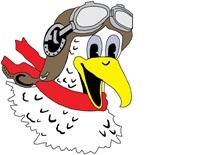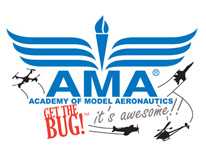To check the basic design of the Delta Dart, I calculated the aircraft Neutral Point (NP). Next I checked the C.G. of the ready to fly model and found that it is about 1 3/8 inch ahead of the N.P., which means the plane should be stable aerodynamically and test glides agree with this data.
I did a number of test flights and they didn’t go very high or glide very far. I checked the weight and the ready to fly dart is 11 grams. If anything the current paper may be adding a little weight, but I have nothing to compare the weight to. If anything, the test plane seemed to be low on power.
Next I searched the Internet again and found some good videos that I did not find last year. They were made in May of 2011, so they may have been built with older (lighter?) paper. The videos are indoors, so that eliminates the wind factor, but they are worth watching because it looks like the performance is much better than what I saw at last year's Delta Dart builds. I was able to track down the person that posted the videos and sent him an email to see what else I can learn. His name is Ryan Hothersall. Watch the two videos:
One of the comments on his video website asked how many turns he used on the motor and the answer was 500 to 600. I suspect they may be using a (longer?) and better rubber for the motor. One of the videos shows him using a winder and the rubber looks longer but stretching the rubber when winding is one of the tricks used by contest flyers. He also said that flight time was up to 1 1/2 minutes, although the video doesn’t show flights quite that long (I didn’t time them). I’ll add any comments I get from Ryan.
Next, I went back to doing test flights and put 400 winds on the motor. The improvement was noticeable with about a doubling of flight time and glide distance. I’m not sure how he is getting such a nice left turn, but it must be warping the tail or adding a trim tab. If anything the balance between prop down thrust and elevator up trim may be a little off as the plane tends to climb steeply, especially if launched into a head breeze. The model probably needs to be tested indoors with some tail trim tabs to get that resolved.
I found the rubber on my test model splitting after about 5 flights, but it’s at least a year old or older, so that could be a factor since rubber degrades sitting on the shelf.
Steve Ashmore provided me with some glycerin lubricating oil for the rubber motors. I applied some to my test plane and the difference was dramatic. It flew much better with just 200 turns and behaved more like the planes in the video. The power delivered by the lubricated motor seemed to be more uniform. This was the single best improvement in performance during all of my testing.
During assembly of my test plane I I found some minor issues with the final assembly fixture which was remedied by removal of some CA buildup. Before each build the fixtures should be checked for similar issues.
The following Internet links were also provided by Steve Ashmore:
FAI Model Supply Rubber for Motors and other resource links
Peck-Polymers Free Flight Building Materials
AC Supply Rubber Powered Balsa and tissue kits
Easy Built Models Model Airplane Accessories
HobbyLinc Free Flight Airplane Accessories
The Vintage Model Free Flight Kits and Accessories
I hope to update this document so that it can be used for reference for our Delta Dart builds and for personal projects. I have also attached below the Midwest Construction Technique Manual. Please read the notes below which updates information in the manual to today's kits and our experience.
Delta Dart Construction Techniques Manual (Midwest Document)
Recommended Build Practices:
- Glue (step 4) - We use white glue and the best technique is to place serveral small drops on the balsa and spread it with a finger. It only takes light finger pressure to spread the glue evenly. Minimize the amount of glue for fast drying so the paper does not tear when cutting out the balsa and paper subassemblies.
- Prop Balance (step 12) - Check prop balance just to get a feel for what may be needed. Most props should be OK. If you see extra plastic flashing on the prop, check the balance.
- Final Assembly (step 14 thru 17) - Ignore since this is done in our special fixtures. But you can build a Delta Dart at home without the fixture.
- Rubber Motor (step 20) - The manual says 8-1/2 inches. Note: Trim the ends to 1/4 inch to save weight in the tail. This year we will try using some glycerin oil to lubricate the rubber motor. We have a limited amount and don't want excess oil on kids clothes, so use as little as possible.
- Winding the Motor (step 22) - Model should fly well with 200 to 300 turns for a Kids Delta Dart build. Add more winds if you have a winder or are flying your own plane. More winds wears the motor out sooner.
I did some test flights at the Maple Valley build. Most consistent problem was "stalling". As described in the Midwest build manual, stalling is due to the model being tail heavy. It looks like the motor should be only 7 1/2 inches long for the current fuselage length. More testing is needed. Get some kits and help us solve the stalling issue! If too much glue is the problem, then we may want to consider other solutions.
What to emphasize to make the build go better:
- Don't use too much glue. Too much glue takes longer to dry, If not dry the paper tears when parts are cut out. It makes the model more difficult to build and tail heavy.
- The best technique I've found to avoid excess glue is to place drops of glue on the balsa stick, not on the paper. Spread the glue with a finger using a very light touch so that you don't wipe the glue off. Spacing of the glue drops takes some experience, so suggest using less and adding more if needed.
- You can tell there is too much glue when the paper beside the sticks is wet or showing beads of white glue
- Best technique to remove excess glue is to use a short scrap of balsa to wipe away excess, then set plan in the sun for a couple minutes before cutting parts from the plan.
- Cut balsa pieces to fit. Fitting balsa may be more difficult on heavier paper, but it will make a more durable model.
- It is difficult to see thru the plans to see how stick ends are cut, especially if the plan is in the shade. Marking cut lines on the plan wii help builders cut balsa to fit. Explain that balsa is cut at an angle to make stronger joints.
- Suggest, but don't demand good build technique, this is a fun event and everyone is there to have a good time!

